A soldier is having his head wound dressed by a doctor. Drops of blood trickle down the man’s forehead and chest. His hands are clamped tightly to the sides of his stretcher bed; his mouth is wide open, exaggeratedly downturned, like a railway tunnel; his teeth bared. Next to him lies a man with his hands clasped to his chest and a sheet covering his face. Behind them, another soldier struggles for balance as a doctor wraps his abdomen in bandages. He is naked from the waist down and bent over, his trousers crumpled around his ankles.
The Doctor (1916) is an extraordinary work and its strange, disconcerting details make it one of the most haunting pieces in ‘Rebel Visions: The War Art of CRW Nevinson’. Timed to coincide with the First World War centenary commemorations, this small exhibition at the Barber Institute of Fine Arts contains drawings, prints and oils, and spans a 20-year period of Nevinson’s remarkable career, from 1914 to 1934. Nevinson served with the Quaker Friends Ambulance Service, and later the Royal Army Medical Corps during the war (he was medically unfit for combat). The acutely observed, piercing details in his paintings are difficult to shake from the mind.
In a small drypoint titled A Dawn 1914 (1915–16) a mass of soldiers march through narrow streets. They pour like ants toward a trap, toward a fight that will most likely be their last. And they know it. Their faces are cast down, features set rigid with determination. The overall effect is characteristically Futurist in its sense of speed, power and relentless forward progress but there is a critical overtone: a sense of the sheer waste to come.
The oil painting A Star Shell (1916) presents another view of the devastation, a picture of modern, mechanised warfare. A single shell explodes over no man’s land, illuminating the night sky with a beautiful pale golden light that hovers like an angel. The initial romantic reading of the work is undercut immediately, however, by the slabs of grey-brown mud, the desolation of the landscape, and, tellingly, the lack of human figures within the scene.
Two adjacent prints reveal some of the propagandist implications of Nevinson’s work. Hans and Fritz (1918), depicts two German prisoners of war with exaggerated facial features, while his Group of Soldiers (1917) shows heavy-set British troops in a similar manner. Both formed part of Nevinson’s body of work for the Official War Artist scheme, but the latter piece was originally censored by the British military who felt it an unfit depiction of brave British lads. The censorship was later rescinded but demonstrates how the ‘image’ of the soldier and of the enemy (the former cast as a noble figure, the latter as degenerate) is paramount to the justification of war and the maintenance of morale.
The exhibition also displays a pair of well-fed round-faced portraits of British war profiteers, individuals who sought to further themselves no matter the cost. One painting is titled He Gained a Fortune, but He Gave a Son (1917), an image of a slightly different enemy to pit oneself against. Nevinson’s overt criticism of the corruption and greed that war perpetuates, along with pieces that refer to the impact of war upon women’s work, add further nuance to the complex ideas addressed within the exhibition.
Finally, ‘Rebel Visions’ includes an eerie, post-apocalyptic vision of the future in which Nevinson seems to foretell further war. The Spirit of Progress (1933), a small drypoint, shows in its foreground a mass of fixed bayonets, flames and upturned canon barrels. The background contains architectural references to London, Paris and New York, encircled by tiny moth-like aeroplanes. In the centre of the work Nevinson places a pile of paintings and sculptures about to be destroyed. A wider message pertaining to the obliteration of art, of culture and of society at the hands of war can be found here, along with clear echoes of the infamous Nazi destruction of subversive, dangerous books and artworks.
The contradictory and oscillating effects of war are laced throughout this select group of Nevinson’s works. Terror is the constant companion of bravery; pity follows heroism; isolation is twinned with comradeship. But Nevinson’s multi-faceted, often controversial works also prove (and here is the glimmer of hope) that creation is never too far behind the horrors of destruction.
‘Rebel Visions: The War Art of CRW Nevinson’ is at the Barber Institute of Fine Arts, Birmingham UK, until 25 January 2015.
Related Articles
Nevinson’s prints at Osborne Samuel, London (Maggie Gray)
Lasting Legacies: the reopening of the IWM London (Diane Lees)
Unlimited access from just $16 every 3 months
Subscribe to get unlimited and exclusive access to the top art stories, interviews and exhibition reviews.

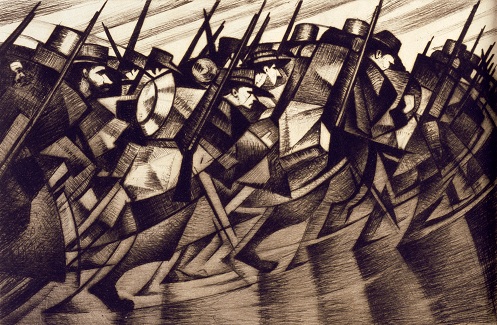
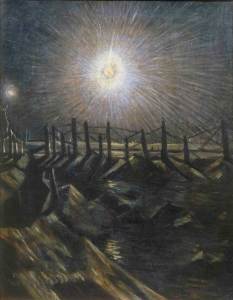
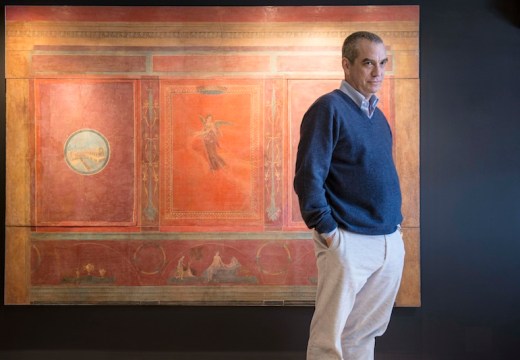
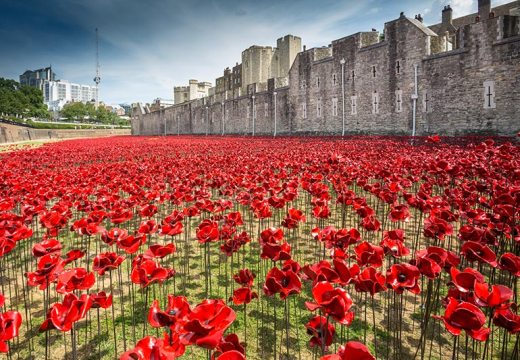
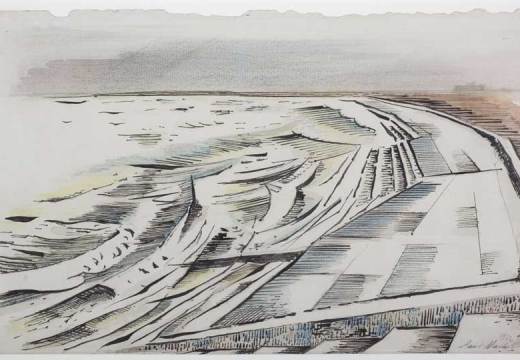









![Masterpiece [Re]discovery 2022. Photo: Ben Fisher Photography, courtesy of Masterpiece London](http://www.apollo-magazine.com/wp-content/uploads/2022/07/MPL2022_4263.jpg)
Why are fathers so absent from art history?